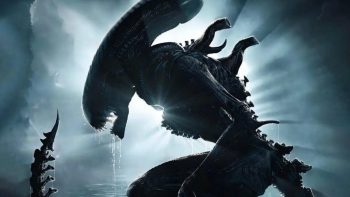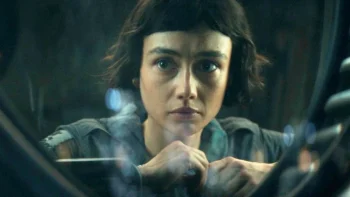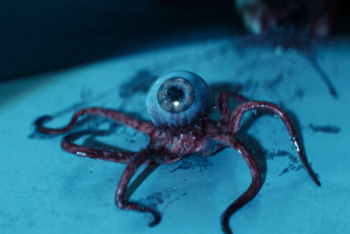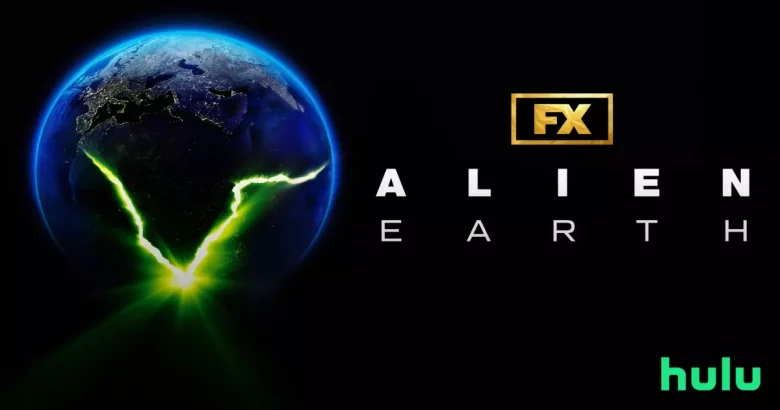ALIEN: EARTH
By Eric Lindbom
-No way was I going to miss the end of ALIEN: EARTH (FX/Hulu). This eight-episode thriller diller comes from prolific, talented writer/producer/director Noah Hawley, a pro at expanding touchstone flicks — like FARGO — into television series that capture the DNA of the source material while veering off in fresh, inventive directions.
To me the ALIEN film series was wanting and repetitious after the first two masterpiece installments by Ridley Scott and James Cameron. David Fincher’s ALIEN 3 was sterile and glum and, while it has defenders, I found Scott’s PROMETHEUS a pretentious botch. Conversely, Hawley’s take will stun fans and newbies alike. This prequel to ALIEN expands the slasher-in-space horror element with up to the minute angles, plugging into our fear of robotics, egotistical tech lords and especially their obsession with life extension.

In the future, the world is run by five competing, mega tech corporations. Boy Kavalier (Samuel Blenkin) a rich, brilliant prodigy and childish jerk has moved way beyond androids. He’s ready to sell consumers on cheating death with a pilot project inserting the consciousness of terminally ill children into manufactured bodies. Kavalier re-names these “hybrids” after the “lost boys” from Peter Pan (he shares a Michael Jackson-level obsession with the children’s book). Meanwhile, a rival tech lord has sent a doomed outer space crew to gather ‘specimens’ of aliens. When the ship crash lands on Boy Kavalier’s city, Morrow, a surviving cyborg who chooses his words carefully (intense Babou-Ceesay), vows to return the specimens to his boss. Boy Kavalier has other plans.
ALIEN: EARTH fascinates on multiple levels based on its well etched characters. Sydney Chandler terrifically channels a giddy enthusiasm as main character “Wendy” and the other five hybrids also believably act like kids but each have specific personalities.

Kirsh (sensible, Spock-ish and enigmatic Timothy Olyphant) is the blonde, blank android assigned to keep them in line. There’s a juicy class struggle among the cyborgs, synths and hybrids. Amusingly, half human cyborg Morrow looks down on android Kirsh and the two rivals trade jibs before inevitably duking it out.
For all their murderous hunger, Wendy realizes the specimens hardly asked to be confined like zoo animals. She learns to communicate with the Xenomorph, the H.R Giger inspired title beastie we know and love with its drooling teeth and ability to infest human bodies and again pop out of their chests in a geyser of blood.
With its deep story threads, Hawley and company could easily have merely served up humans as meat for the Xenomorph the known quantity we’ve seen in multiple spin offs. Instead, there’s a menagerie of new monsters including winged bugs that secrete metal and skin melting gunk. The break out creature is an eyeball that crawls on spindly eggs and sucks itself into the sockets of humans and animals (including an eerie sheep). It reminded me of the rat fink art of Michael Roberts.

Any horror fan or even an a-gore-a-phobe will sync with the liberal dollops of well-spaced but not brutal kills. Dana Gonzales, an Emmy winner for FARGO, directs half the episodes and brings an electric pace. The production design and special effects are top notch and music supervisor Jeff Russo, another FARGO regular, creates mournful music while the end credits of each episode howl with Nine Inch Nails worthy industrial death screeds. Speaking of endings, the finale is a corker – unexpected, open to interpretation and ideally suited to the needs of season two.
Eric Lindbom is a hardcore horror buff with a strong stomach, weaned on the Universal classics from the ’30s and ’40s. He’s written film and/or music reviews for City Pages, Twin Cities Reader, LA WEEKLY, Request magazine and Netflix. He co-edits triggerwarningshortfiction.com, a site specializing in horror, fantasy and crime short stories with illustrations by co-editor John Skewes. He lives in Los Angeles.







